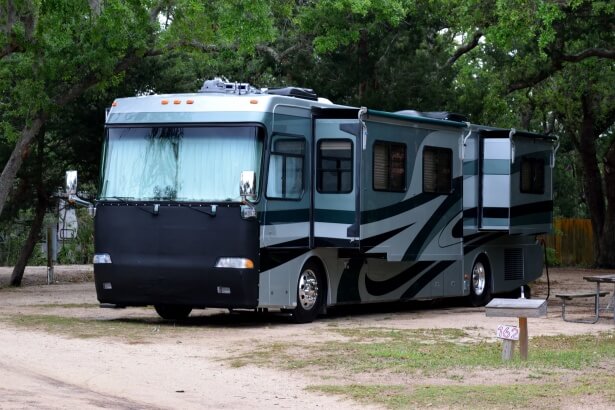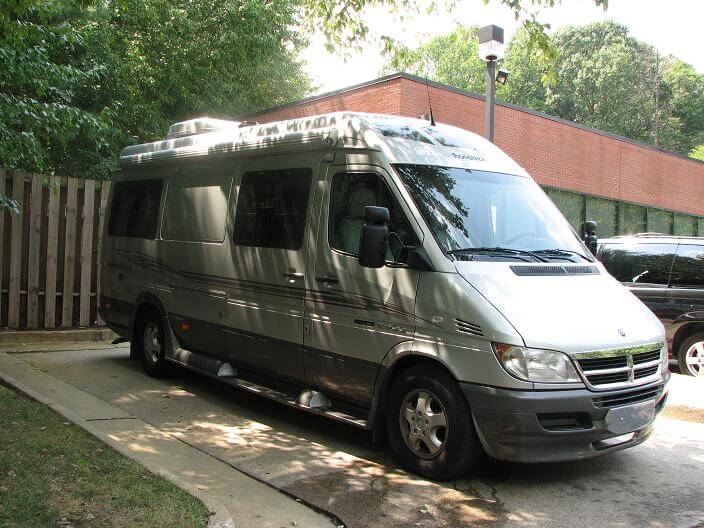Types of RVs
The full form of RV is Recreational Vehicle. There are many types of RVs, but all of them will have living quarters, like a small condo apartment where you and your family or friends may live and rest.
So, RVs are a fun way to travel with a large group of people, or stay in some unique locations for long durations. Haven’t you felt the need to rest while driving long distances, to stop the vehicle and take a nap. What if your vehicle had your bedroom attached to it?
Or maybe come across a mesmerizing stretch along your way, and wished to spend a few days there.
RVs provide us the best of both the worlds – the excitement and adventure that comes with travelling, and the comfort of home.
There are basically two major classes of RVs – those with a motor, and those without.
Let’s dig a bit deeper, and see the various types of RVs that we often encounter.
 Table of Contents
Table of Contents- Types of RVs
- Motorhomes
- Towable RVs
Types of RVs
There are basically two major classes of RVs:
- Motor Vehicle - RVs that have a motor, i.e. an engine.
- Towable RVs - RVs that do not have a motor. So, we need to attach them onto some other vehicle if we intend to move them from one place to another.
Motorhomes
As the name suggests, these RVs have a motor. So, they can be moved on their own, i.e. these are drivable.
They come in three classes – A, B and C.
Class A Motorhomes
These are the largest and the most expensive kind of drivable RVs. They look like a bus, with slightly backward slanted front windshield.

There is a lot of variety within this class too. Class A RVs come in a variety of sizes – from 24 to 45 feet long.
In these RVs you will get two engine options:
- RV having a Gas engine, which is generally installed at the front end of the vehicle
- RV having a Diesel engine, which is generally installed at the rear end of the vehicle – These RVs are often called Diesel Pushers or just Pushers.
 Note
NoteTag Axel RVs are Class A Motorhomes, that have an extra axel at the back end. Extra axel means extra tyres, that allows the RV to carry more weight.
Tag Axel, Diesel Pusher RVs are the biggest RVs out there, allowing you huge storage space.
Class B Motorhomes
These RVs look like a van from the outside. They are often called as Camper Vans.

There is a lot of variety within this class too. Class B RVs come in a variety of sizes – from 17 to 24 feet long.
Class C Motorhomes
They combine the features of Class A and Class B motorhomes. So, it will have a truck/van at the front, and a box behind it. Most of them also have an overhead cabin (that seems to hang over the front van part of the RV).

There is a lot of variety within this class too. Class C RVs come in a variety of sizes – from 20 to 30 feet long.
 Note
NoteSuper Bs and Super Cs are basically supersized versions of their respective class.
Towable RVs
These RVs need to be towed by attaching them behind another vehicle, as they do not have a motor of their own.
Some of these towable kinds of RVs are Travel Trailers, Fifth-wheel Trailers, and Truck Campers.
Towable RVs are distinguished based on how they are towed. Basically, there are two broad types of towable RVs:
- Those having traditional bumper pull to attach with your vehicle, e.g. in Travel Trailers.
- Those having a special hitch to attach with your vehicle, e.g. in Fifth-wheel Trailers
Bumper pull Variety
There’s a wide variety of Bumper pull Towable RVs. Some so small that you can attach them behind your motorcycle, and some as large as 40 feet.

Some examples of bumper-pull RVs are: Travel Trailers, Camper Trailers, Popup Campers, etc.
 Note
NoteCaravan Trailers are a bit larger than Camper Trailers. That’s the only main difference between them.
The bigger size of Caravan Trailers means more luxurious inner space, more storage, bigger water tanks, etc. It can have facilities like kitchen and washroom. Naturally, they are heavier.
Fifth-wheel Variety
The only way they differ from Bumper pull RVs is the hitch they have at the front. Because of this, they tend to be a bit heavier than Bumper pull Towable RVs.

The hitch is installed at the bed of the truck. This means that the connecting joint in case of a fifth wheel is situated higher than what was the case with bumper pulls. It makes these towable RVs a bit taller – both from the outside and inside.
As hitch is installed at the bed of the truck, it also allows us to take sharper turns without jack-knifing.
 Truck Camper
Truck CamperThey are neither motorhomes, nor towable RVs. That is, neither do they have a motor, nor can they be towed. They don’t even have wheels.
Truck Camper is just a cabin structure that can be fitted in the bed of your truck. They too come in various sizes.
 A thumb rule
A thumb ruleYou should do some research regarding what type of bumper pull or fifth-wheel RV can easily be attached at the back of your vehicle, and how much can it safely pull.
Smaller and hence lighter towable RVs can be towed even by SUVs.
However, to tow a towable RV that is larger than 19 or 21 feet, you will need a bigger vehicle, such as a Land Cruiser.
It would be a good idea to take your vehicle to the RV showroom and get an expert opinion of someone working there.
